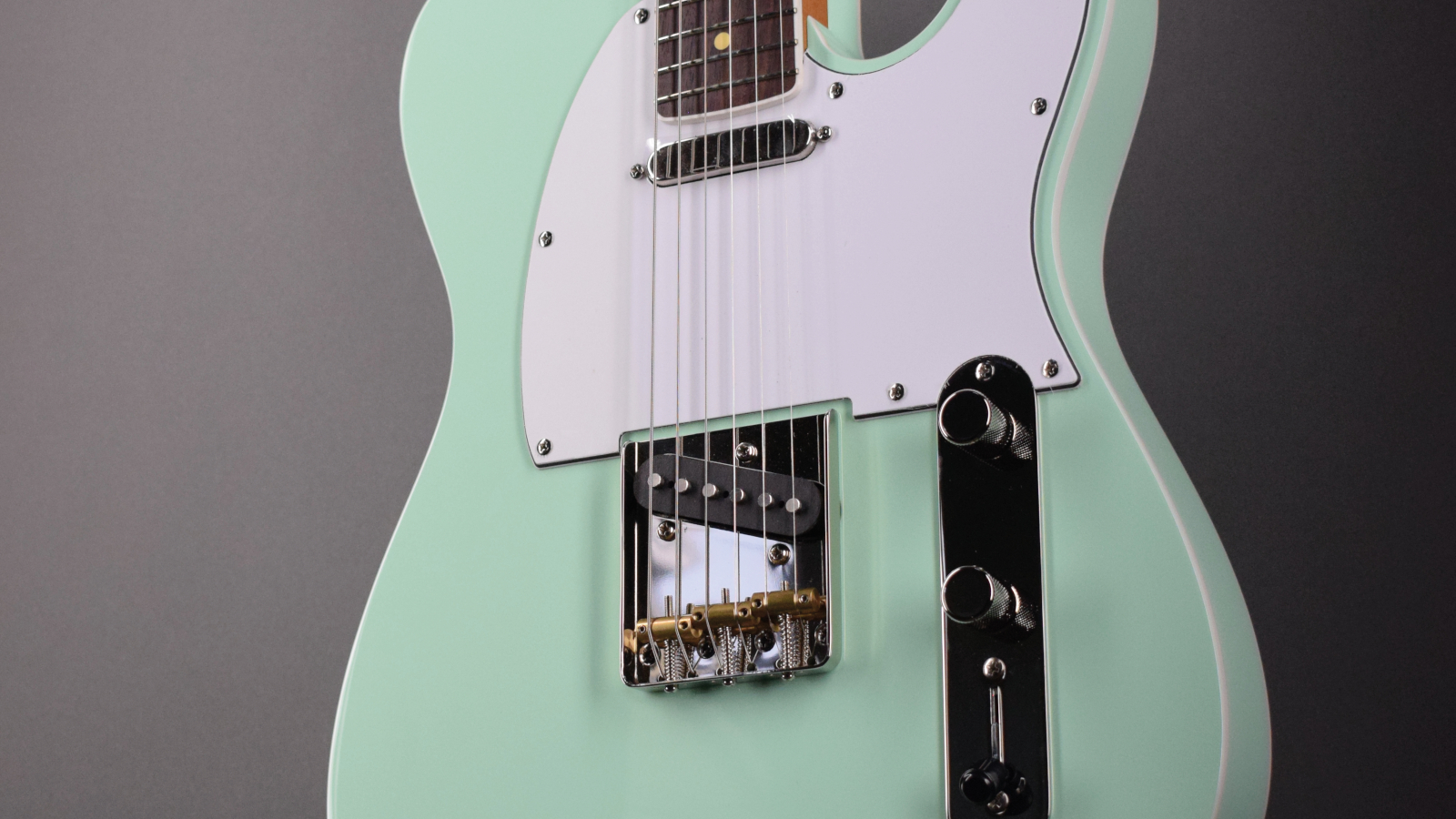GuitarPlayer Verdict
The MVT-64 presents a highly enjoyable take on a mid-’60s T-styler. It’s modernized in all the right ways without losing sight of the traditional tone and feel players love about older Teles.
Pros
- +
An excellent-playing and -sounding T-styler that’s well made and features savvy updates
- +
PLEK fret dressing enhances playability and is a bonus in this price range
Cons
- -
No case included (Access Stage 3 gig bag is available for purchase)
You can trust Guitar Player.
Located in Austin, Texas, Modern Vintage offers a series of guitars and basses that are based on ’60s-era Strats, Teles, and J- and P-Basses. However, they feature modern updates that include torrefied (roasted) maple necks, headstock accessible two-way truss rods, premium electronics and hardware, body and neck binding (on the MVT-64 only) and nine color choices, most of which include matching painted headstocks.
All Modern Vintage instruments now feature PLEK process fretboard dressing to ensure the best possible playing setup. This comes at no extra cost, which is a real bonus when you consider what a PLEK treatment can add to the price of an instrument.
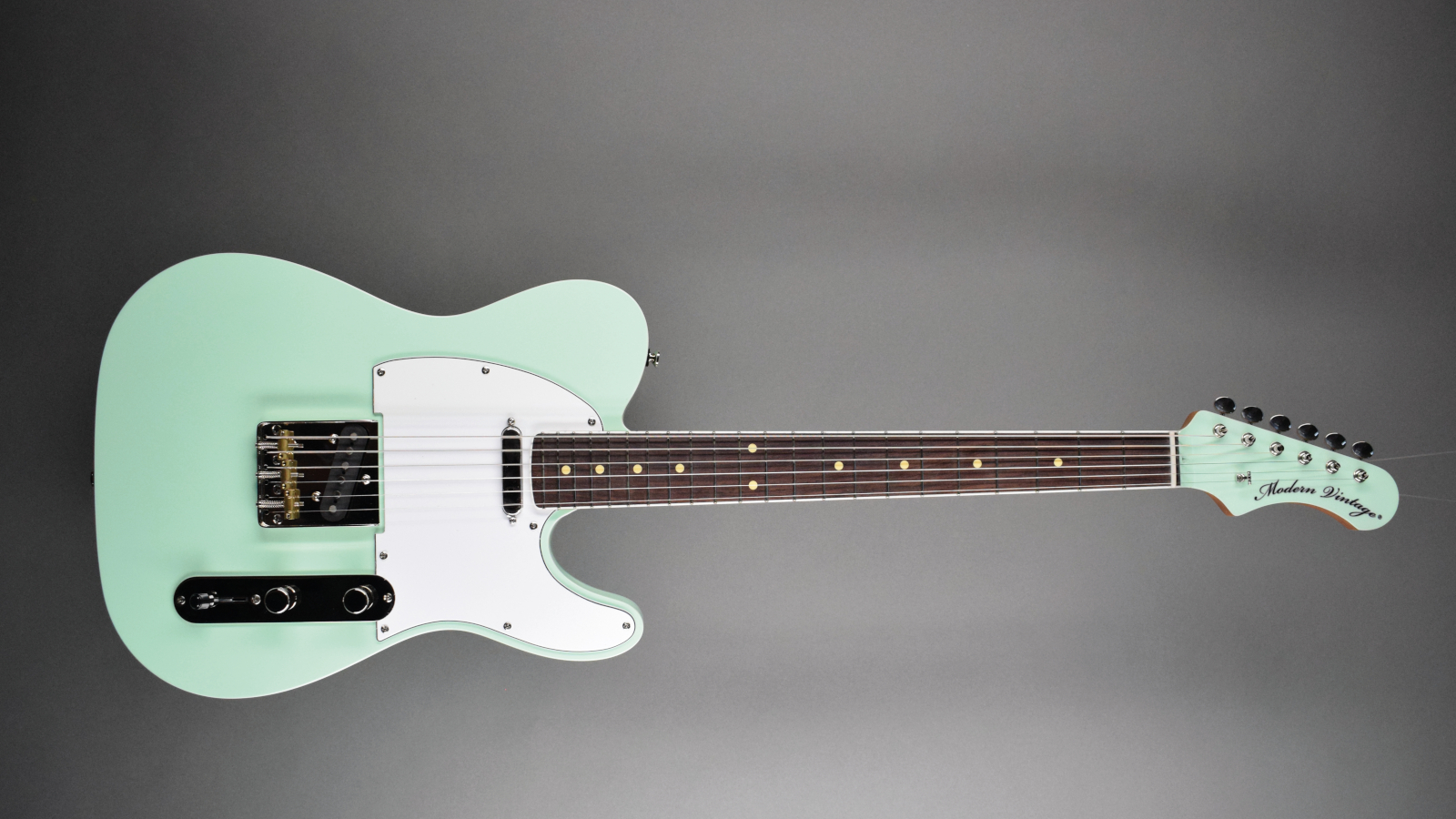
We received two MVT-64 guitars for this review: a Seafoam Green model with a rosewood fretboard, and a 3-Color Sunburst with a maple ’board and a nonpainted headstock. Other than the differences between these woods and the inconsequential weight disparities (we’re talking a few ounces), the guitars are virtually identical.
The satin-finished neck has what Modern Vintage calls a “traditional” C shape, and it’s comfortable and very easy playing, thanks to the medium frets, low action and wide-ish 9.5-inch radius. The edges of the bound fretboard are super smooth, and the nut has no sharp corners and feels seamless to the touch. The finish and binding on both electric guitars are flawless, and they carry a three-ply white/black/white beveled pickguard. (The Piano Black version has a black/white/ black ’guard.)
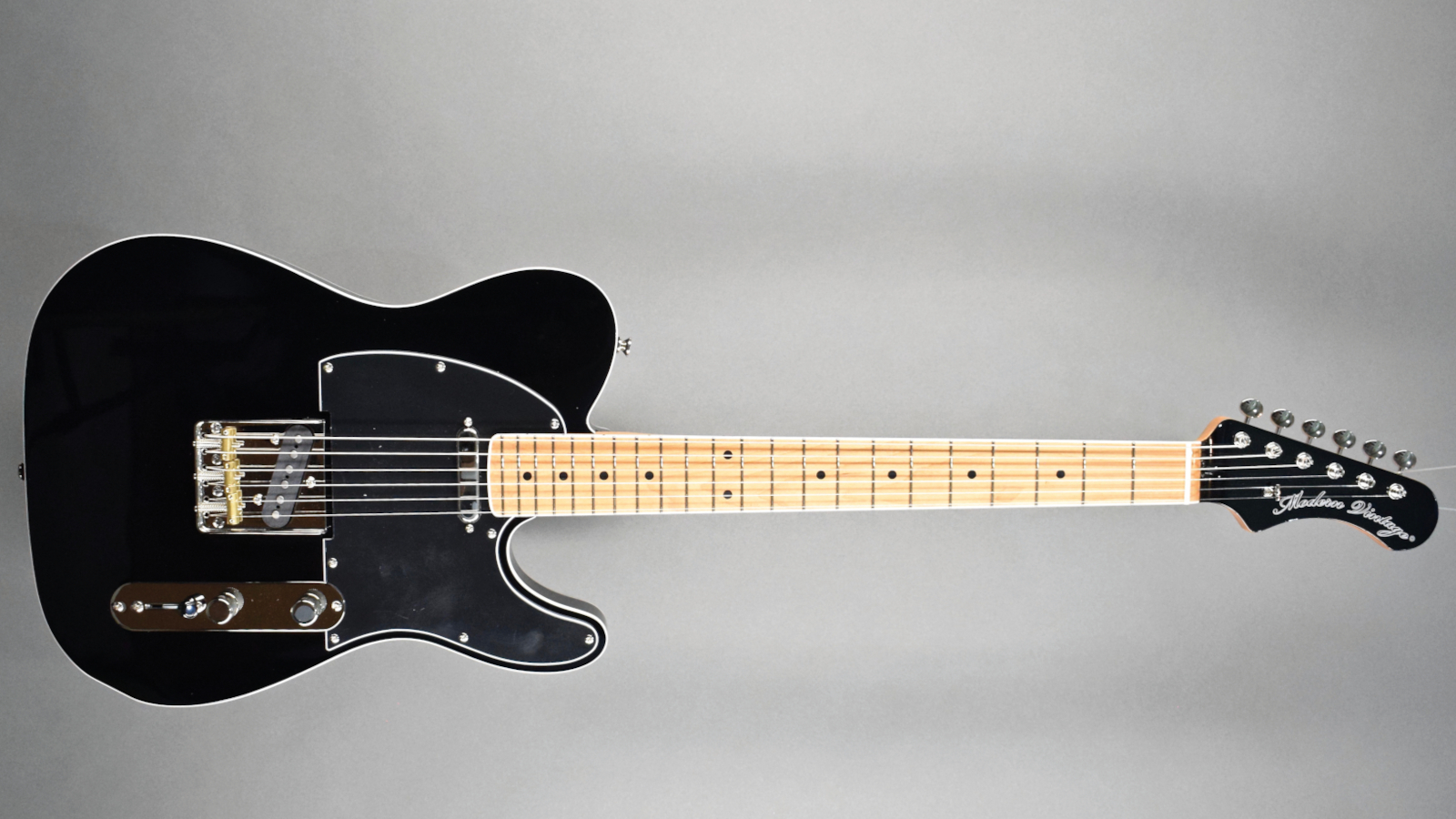
The MVT-64’s white binding makes it stand out when parked next to a traditional Tele, and the painted headstock and dark fingerboard on the Seafoam Green version take it up a notch compared to our maple version – although that depends on whether a classic 3-Color Sunburst is more your cup of tea. Modern Vintage reverses the control plate, so the volume and tone knobs (both knurled flat-toppers) are in front of the pickup selector. This arrangement may suit some players more than others, but it’s easy enough to unreverse it if desired. The pots have a high-quality feel, and MV uses waxed, cloth-insulated wire for the connections.
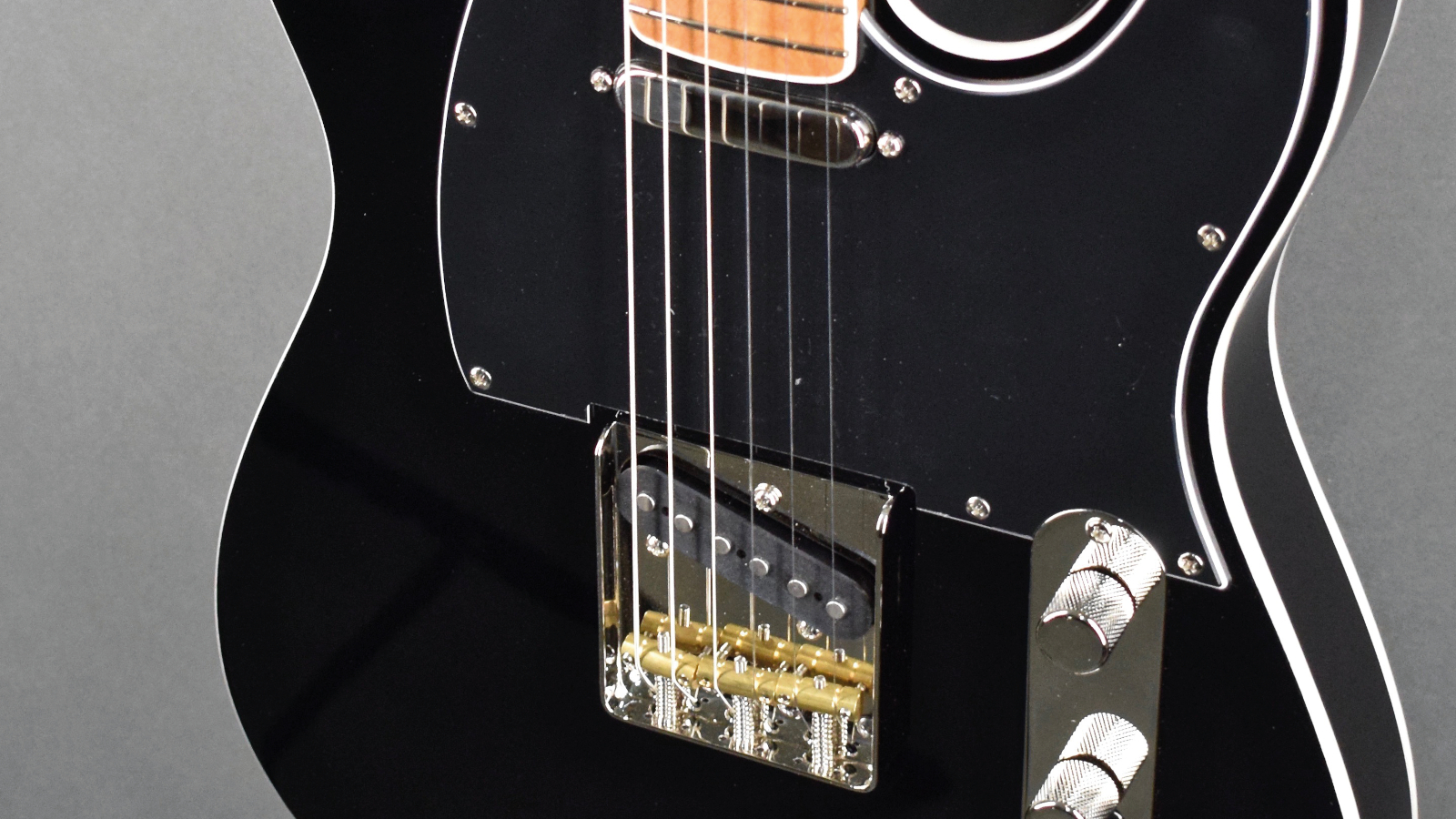
The MVT-64 has a lively acoustic sound with good sustain, qualities that are enhanced by the neck-roasting process and the brass bridge-saddles, both of which help to increase vibrational transfer from the strings – and it intonates tunefully when moving around the neck.
Plugged into either a Fender Deluxe Reverb or a Victoria Double Deluxe 2x12 combo, the MVT-64 delivered a clear, stringy tone, with a nice transient “pop” off the leading edge of the pick. The pickups are well balanced in terms of output and clarity, and both electric guitars delivered a very satisfying range of sounds, from rich neck-pickup tones to gutsy explosiveness from the flat-pole single-coil.
The bridge setting’s fat bite is superb for lead playing, and it stays crisp and round when the volume is rolled back to yield everything from gritty rhythm tones to very clean sounds, depending on where the amp is set. With the Victoria combo’s volume at about five on the Bright channel, it was easy to control the full range of clean to grind from the guitar, using a boost or OD pedal to kick the distortion and volume when needed.
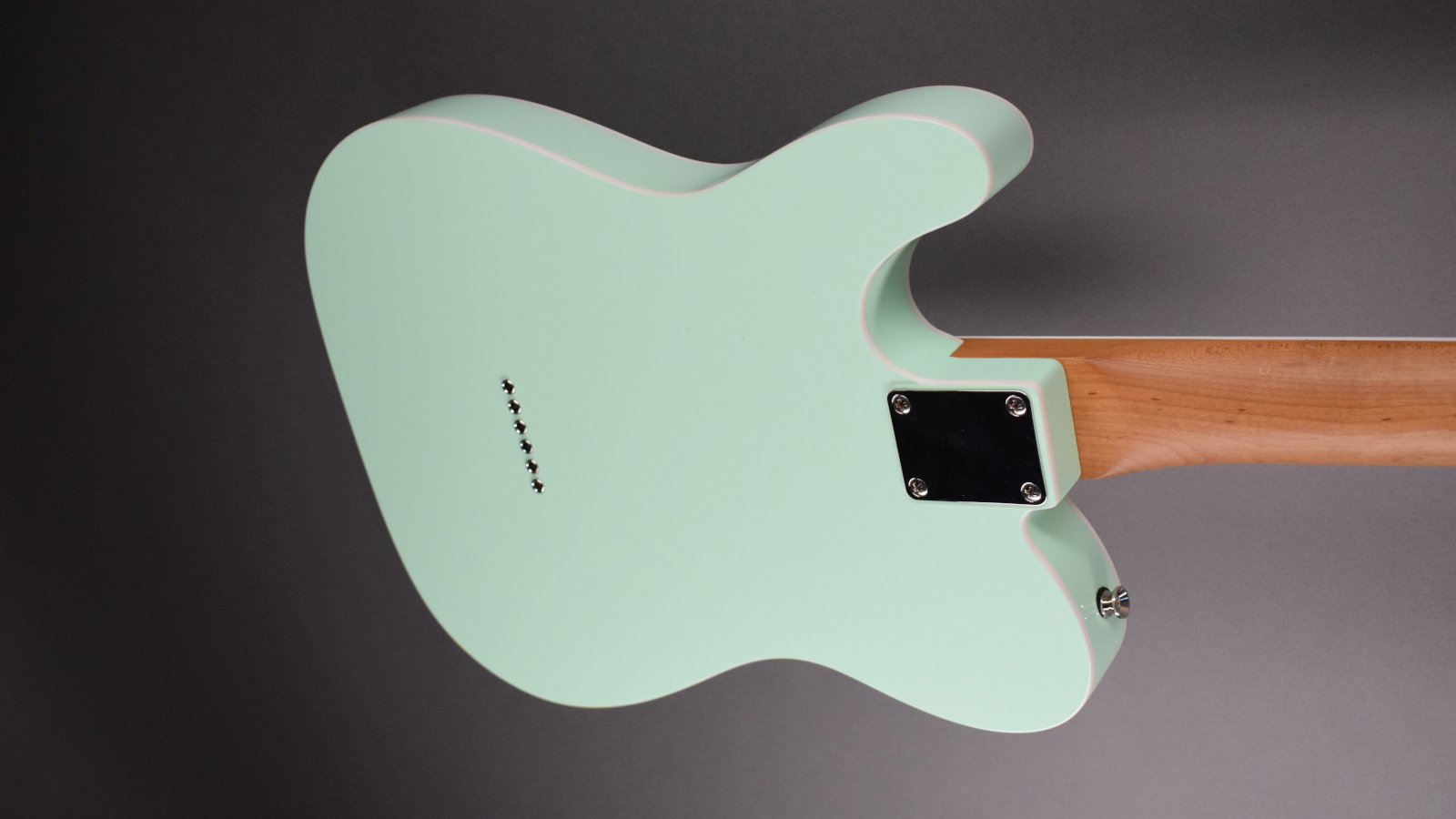
Also noteworthy, the tone control shaves off the treble smoothly and without muddiness when browner tones are called for, such as when playing through high-gain amps or pedals. With both pickups selected, the MVT-64 covers quite a range of rhythm ground, and its slightly twangy voicing makes it cool for blues to rock to funk. It sounds great for jazzy stuff too, so you can pretty much do anything you want with an electric guitar like this. As for the choice of fretboard, our review guitars sounded essentially identical so choose what suits ya.
In all, the MVT-64 presents a highly enjoyable take on a mid-’60s T-styler. It’s modernized in all the right ways without losing sight of the traditional tone and feel players love about older Teles. As evidenced by the excellent build quality and attention to detail of these review guitars, Modern Vintage has a formula that should win them many fans.
Specifications:
- NUT WIDTH 1.69” synthetic bone
- NECK Torrefied maple, bolt-on
- FRETBOARD Indian rosewood with white dots, 25.5” scale, 9.5” radius, Also available with torrefied maple fretboard and black dots
- FRETS 21
- TUNERS Kluson style
- BODY Alder with full binding
- BRIDGE Strings-through-body vintage-style with three adjustable brass saddles PICKUPS Custom wound single-coils
- CONTROLS Volume, tone, three-way selector
- EXTRAS PLEK fret-dress process. Headstock adjustable dual-action truss rod.
- FACTORY STRINGS Black Smith.010–.046
- WEIGHT 8.12 lbs (as tested)
- BUILT South Korea
For more information visit modernvintageguitars.com

Art Thompson is Senior Editor of Guitar Player magazine. He has authored stories with numerous guitar greats including B.B. King, Prince and Scotty Moore and interviewed gear innovators such as Paul Reed Smith, Randall Smith and Gary Kramer. He also wrote the first book on vintage effects pedals, Stompbox. Art's busy performance schedule with three stylistically diverse groups provides ample opportunity to test-drive new guitars, amps and effects, many of which are featured in the pages of GP.
Guitar Center's Guitar-A-Thon is back, and it includes a colossal $600 off a Gibson Les Paul, $180 off a Fender Strat, and a slew of new exclusive models
"We tried every guitar for weeks, and nothing would fit. And then, one day, we pulled this out." Mike Campbell on his "Red Dog" Telecaster, the guitar behind Tom Petty & the Heartbreakers' "Refugee" and the focus of two new Fender tribute models
